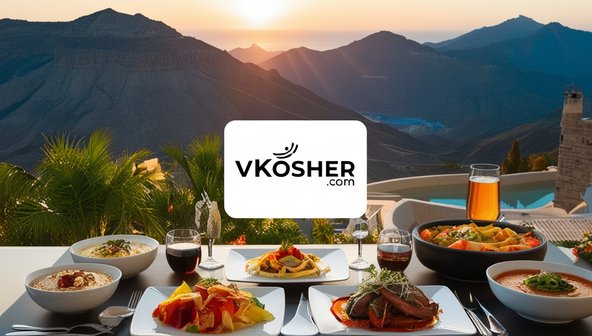Understanding Kosher Pareve: A Comprehensive Guide
Introduction to Kosher Dietary Laws
The concept of kosher is deeply rooted in Jewish religious traditions, dating back thousands of years. These dietary laws, known as kashrut, dictate which foods are permissible (kosher) and which are not. Within this system, foods are categorized into three primary groups: meat (fleishig), dairy (milchig), and pareve (neutral). While meat and dairy each have specific rules regarding their consumption and preparation, the category of pareve plays a unique and crucial role in the kosher diet.
What Is Kosher Pareve?
Pareve, also spelled "parve," refers to foods that are considered neutral according to kosher dietary laws. This neutrality means that pareve foods contain neither meat nor dairy ingredients and can be consumed with either type of food. The term "pareve" comes from the Yiddish word for "neutral," which accurately describes its function within a kosher diet. Foods categorized as pareve include fruits, vegetables, grains, eggs, fish, and certain plant-based products.
Importance of Pareve in Kosher Cooking
In a kosher kitchen, maintaining separation between meat and dairy is of utmost importance. Jewish dietary laws prohibit the mixing of meat and dairy, not only in the same meal but also in the utensils, pots, and cooking methods used to prepare them. This separation extends to the washing and storage of dishes. Pareve foods, being neutral, are a critical component in this system as they can be used in both meat and dairy meals without violating kosher laws.
For instance, a salad made entirely of vegetables and grains can be served alongside either a steak or a cheese dish, as long as no meat or dairy ingredients are introduced into the salad. Similarly, pareve foods like bread, pasta, and rice can be used to complement both types of meals, making them incredibly versatile in a kosher kitchen.
Common Pareve Foods
Pareve foods are diverse and form the backbone of many kosher meals. Fresh fruits and vegetables are naturally pareve, as are grains like rice, quinoa, and barley. Eggs, despite being an animal product, are also considered pareve. Fish, such as salmon and tuna, are classified as pareve, although they have their own set of rules within kosher laws, particularly the requirement that fish must have fins and scales to be considered kosher.
Many processed foods can also be pareve, but they must be certified as such by a reliable kosher certification agency. This certification ensures that the food has been prepared and packaged in a way that prevents contamination with meat or dairy products. Common examples of pareve processed foods include pasta, bread, and baked goods made without milk or butter, as well as plant-based oils and margarine.
Pareve Certification and Kosher Symbols
For those adhering strictly to kosher laws, it is essential to know how to identify pareve foods when shopping. Kosher certification agencies, such as the Orthodox Union (OU) and Star-K, provide symbols on food packaging to indicate a product's kosher status. These symbols often include additional letters or words to specify whether the product is dairy, meat, or pareve.
The pareve designation is typically represented by the word "pareve" or the letter "P" next to the kosher symbol. For example, a product with the OU symbol and a "P" next to it is certified as pareve by the Orthodox Union. Consumers rely on these certifications to ensure that the foods they purchase meet kosher dietary standards and are free from contamination with meat or dairy.
The Role of Pareve in Baking and Cooking
Pareve ingredients are especially important in baking, as many traditional baked goods include dairy products like milk, butter, and cream. To make these recipes kosher, bakers often substitute pareve ingredients, such as using water, almond milk, or margarine instead of dairy milk or butter. These substitutions allow for the creation of delicious baked goods that can be served in either meat or dairy meals.
In cooking, pareve ingredients provide versatility in meal planning. A simple tomato sauce made with fresh tomatoes, garlic, and herbs is naturally pareve and can be used on pasta for a dairy meal or over grilled chicken for a meat meal. Similarly, soups made with vegetable broth and pureed vegetables are pareve and can be enjoyed with a variety of dishes.
Challenges in Maintaining Pareve Status
One of the challenges of maintaining pareve status is avoiding cross-contamination with meat or dairy. This requires strict adherence to kosher kitchen practices, including the use of separate utensils, cutting boards, and cookware for meat and dairy. In some cases, even the steam from cooking meat or dairy can render a pareve dish non-pareve, so care must be taken to prevent this.
For example, if a pareve cake is baked in an oven immediately after cooking a meat dish, the steam and residue from the meat could potentially contaminate the cake, making it no longer pareve. To prevent this, many kosher kitchens have separate ovens or take care to thoroughly clean and ventilate the oven between uses.
Pareve and Veganism
While pareve foods are free from meat and dairy, it is important to note that they are not necessarily vegan. Eggs and fish are pareve, but they are animal products and thus not suitable for a vegan diet. However, many pareve foods are plant-based and can be incorporated into vegan meal plans.
In recent years, the rise of veganism has led to an increase in vegan-certified products, which are often also pareve. This overlap has made it easier for kosher consumers who prefer plant-based diets to find suitable foods. Many vegan products, such as plant-based meats and dairy alternatives, are pareve and can be used in kosher cooking to create dishes that meet both kosher and vegan dietary requirements.
Pareve in the Modern Kosher Kitchen
The modern kosher kitchen benefits greatly from the availability of pareve products, which have expanded in variety and quality over the years. Today, kosher consumers can find a wide range of pareve alternatives to traditionally dairy or meat-based products, including non-dairy creamers, soy-based cheeses, and plant-based protein sources.
These innovations have made it easier to maintain a kosher diet without sacrificing variety or taste. For example, pareve ice creams made from coconut milk or almond milk provide a delicious dessert option that can be enjoyed after a meat meal. Similarly, pareve cream cheese and sour cream alternatives allow for the preparation of dishes like cheesecake or creamy sauces without violating kosher laws.
Conclusion: The Essential Role of Pareve in Kosher Living
Kosher pareve foods play an essential role in the lives of those who observe Jewish dietary laws. Their neutrality allows for flexibility in meal planning and ensures that kosher kitchens can maintain the necessary separation between meat and dairy. From fresh fruits and vegetables to processed foods and innovative plant-based products, pareve foods offer a wide range of options for creating delicious, kosher-compliant meals.
Understanding the importance of pareve in kosher cooking helps to appreciate the meticulous care that goes into maintaining a kosher kitchen. It also highlights the adaptability of kosher laws to modern dietary trends, such as veganism, which often align with the principles of pareve. As kosher food products continue to evolve, the role of pareve will remain central to kosher living, offering a foundation of versatility and compliance with ancient traditions.




